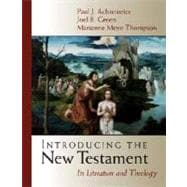Wonderfully readable, eminently teachable, and well supplied with maps, sidebars, photographs, and bibliographies, Introducing the New Testament makes an ideal textbook for seminary and college courses, regardless of their theological orientation. Written by three leading New Testament specialists, the book focuses directly on the New Testament's literature, its message, and the issues raised by a careful reading of its pages.
Unlike other New Testament introductions that are primarily concerned with historical-critical issues or with what other scholars have said, Introducing the New Testament gets directly to the business of clearly explaining the background and content of the New Testament books as well as inducting readers of the New Testament into sensitive appreciation and serious awareness of its major figures and concerns. No other text on the New Testament is so classroom friendly, authoritative, balanced, and enjoyable to use.








